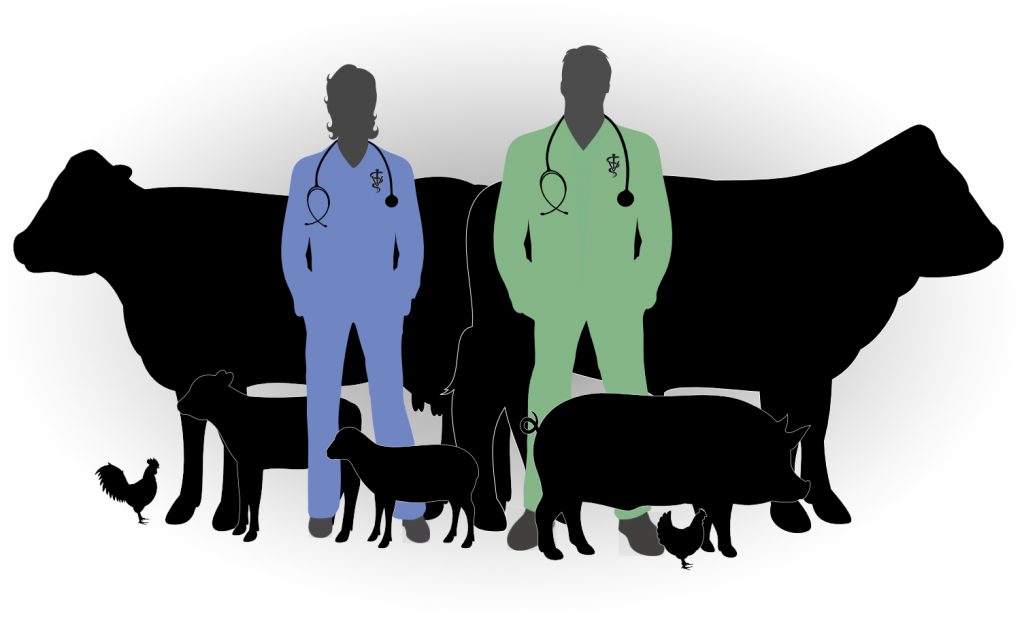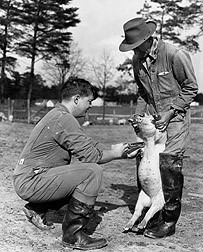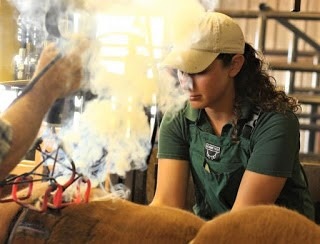
Food animal veterinarians have always been vital for the health and well-being of our nation’s food supply, but now—with a global health crisis going on—the need to recruit and retain professionals is even more in focus. In a new publication from CAST—Impact of Recruitment and Retention of Food Animal Veterinarians on the U.S. Food Supply—experts describe the economic and social factors adding to the challenges to develop the professionals needed to ensure the health and welfare of food-producing animals. The paper and a student study guide are available for free on the CAST website.
As the publication confirms, the food animal veterinarian challenges are especially noticeable in rural parts of the country. Their roles have changed during the past decades with the evolving nature of agriculture—economics, technological advances, social shifts—but one thing remains the same. Food animal veterinarians are key parts of the community.
Superheroes on the Family Farm

I grew up on a farm during the era of the first Batman and Superman TV versions, but an early superhero for us was the rural veterinarian. As an eight-year-old, I watched Doc Walker perform his own type of CSI in our north grove where the pigs roamed. A 250-pound barrow had mysteriously collapsed and died. Doc pulled out his implements, and we kids stared as he cut and probed in the fading light. His autopsy finally determined that the hog had eaten from a deadly nightshade plant—a rare occurrence and cryptic enough to get us kids fantasizing about poisons.
Later that year, I saw Doc do a cesarean on a neighbor’s sow. Blood, pulsating innards, slime-covered newborn pigs—I had plenty of details to use during the classroom show-and-tell session the next day at school.
For rural veterinarians, these performances were all part of the routine, and as Dad reminded me, country vets back then held the farming community together. “It was more than the sensational episodes that made the vet important. They helped us during the hog cholera epidemics of the past, and when various vaccinations came on the market, they kept our herds protected.”
With the changes in technology and farming practices, the particular skills needed for a large animal veterinarian have widened, but their main mission is similar. They help the producers raise safe, wholesome animals, and they play a key role in protecting the health of the general public.

Many rural areas in the United States face a serious need for veterinarians—especially ones who specialize in livestock. During the past few years, young people have been showing more interest in agriculture-related professions, and officials hope this trend affects the veterinary field also. Rural communities, livestock producers, and anyone who eats should hope young people can combine intelligence, a love of animals, and enough tuition money to make it through veterinary school and on to large animal practice.
Maybe they can be lured in by the glamor involved with getting a sick bull to take its medicine or sticking a gloved hand “where the sun don’t shine” to help during a difficult birth. As Dad recalls, “There was old Doc, working hard in the muck, vaccinating young hogs for erysipelas, and what was his reward—a pig he was holding sent a strong stream of urine straight into the top of his rain boot.” Maybe we should add “sense of humor” to that list of characteristics for prospective veterinarians. They were heroes in the past, and now with pandemics and food safety a global concern, the country needs food animal veterinarians more than ever.
by Dan Gogerty
(top graphic from CAST; middle pic from publicbroadcasting.net; bottom pic from usda-ars.com)
Your donation to CAST helps support the CAST mission of communicating science to meet the challenge of producing enough food, fiber and fuel for a growing population. Every gift, no matter the size, is appreciated.